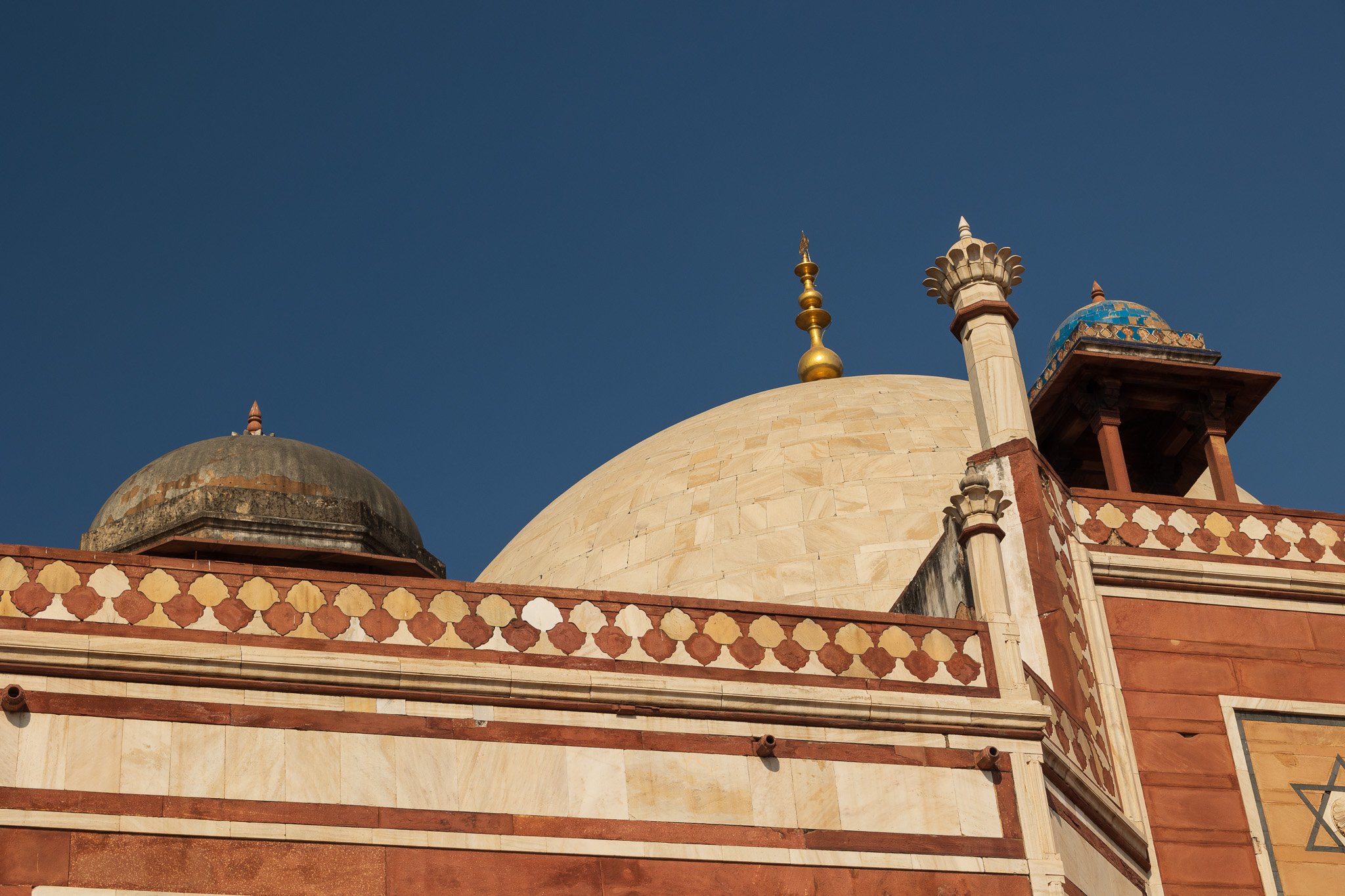In his letter to the Montreal Star on March 2, 1901, Karl wrote: “I left Agra and proceeded in a southerly direction, and at the end of 29 miles arrived at Futehpur Sikri, designed and intended by Akbar as another new capital. It now consists however of only a mass of ruins of noble and unfinished buildings.”
Fatehpur Sikri, celebrated as the "City of Victory," was intricately planned by Emperor Akbar as the capital of the Mughal Empire. Constructed between 1571 and 1573, the city became a magnificent urban center adorned with palaces, mosques, residences, and administrative structures. However, after a mere 12 years, water scarcity prompted Emperor Akbar to relocate the capital from Fatehpur Sikri to Lahore.
Today, Fatehpur Sikri stands as an abandoned city, its architectural masterpieces echoing Karl's poignant observations. Yet it remains a sought-after tourist destination. The Imperial Palace and the grand Jama Masjid Mosque stand as enduring testaments to the once-flourishing Mughal capital.
In 1585, the capital shifted again, this time to Lahore. Centuries passed, witnessing the imperial capitals migrate to Agra and eventually culminate in the walled city of Shahjahanabad, better known as Old Delhi, during the British Raj era.
Under British rule, Calcutta (now Kolkata) assumed the title of India's capital until 1911, when Delhi, specifically "New Delhi," was chosen due to its central location and strategic political considerations.
Presently, the capital is known as "Delhi," encompassing the historic heart of Old Delhi with its Mughal heritage and the British-influenced architecture and infrastructure of New Delhi. Although I didn't explore the ancient Mughal capital of Fatehpur Sikri, I couldn't resist immersing myself in the vibrant life of India's current capital.
With its bustling energy, Delhi can be overwhelming—a river of people, rickshaws, and a palpable aura steeped in history. It was the starting point for my Indian journey, proving the ideal place to acclimate and awaken my senses.
While many Western tourists are directed toward the lively streets with their array of street food vendors, risking the infamous "Delhi belly," I sought a different experience. My yearning to wander led me to discover another facet of Delhi, prompting explorations of the Red Fort, Humayun's Tomb, and Lodi Gardens.
Red Fort
The Red Fort, an enduring city symbol, was built in 1638 to protect the Mughal emperors against potential invaders. What's truly remarkable is its unwavering resilience through history, having weathered numerous challenges, including breaches by both Sikh and British forces at different times. Today, the Red Fort stands as a testament to its indomitable spirit.
Humayun's Tomb
Emperor Humayun's mausoleum, his eternal resting place, not only inspired the magnificent Taj Mahal but also holds the prestigious distinction of being the pioneering structure to embrace this distinctive architectural style.
Lodhi Garden
Nestled in the bustling heart of Delhi, Lodhi Garden was originally named after Lady Willingdon, the wife of the viceroy of India. This beautiful park was carefully landscaped in 1936, incorporating the Lodi-era tombs. Today, it is a tree-shaded haven that offers a much-needed oasis for families seeking a grassy spot for a picnic, local joggers, couples seeking a romantic walk, and solo travellers, like me looking for a quiet respite from bustling Delhi. These gardens play a vital role in conserving over 100 species of trees, 50 species of birds, and 40 species of flowers while housing 15th-century Mughal monuments that add a historical charm to the landscape.
I hope, dear reader, that the images offer you a fresh perspective on your perception of Delhi. Delhi can shape your broader impressions of India if those initial encounters are less than ideal. In India's capital, my journey commenced here — exploring the Red Fort, Humayan’s Tomb, and Lodhi Garden laid the foundation for my deeper appreciation of this extraordinary country.




































